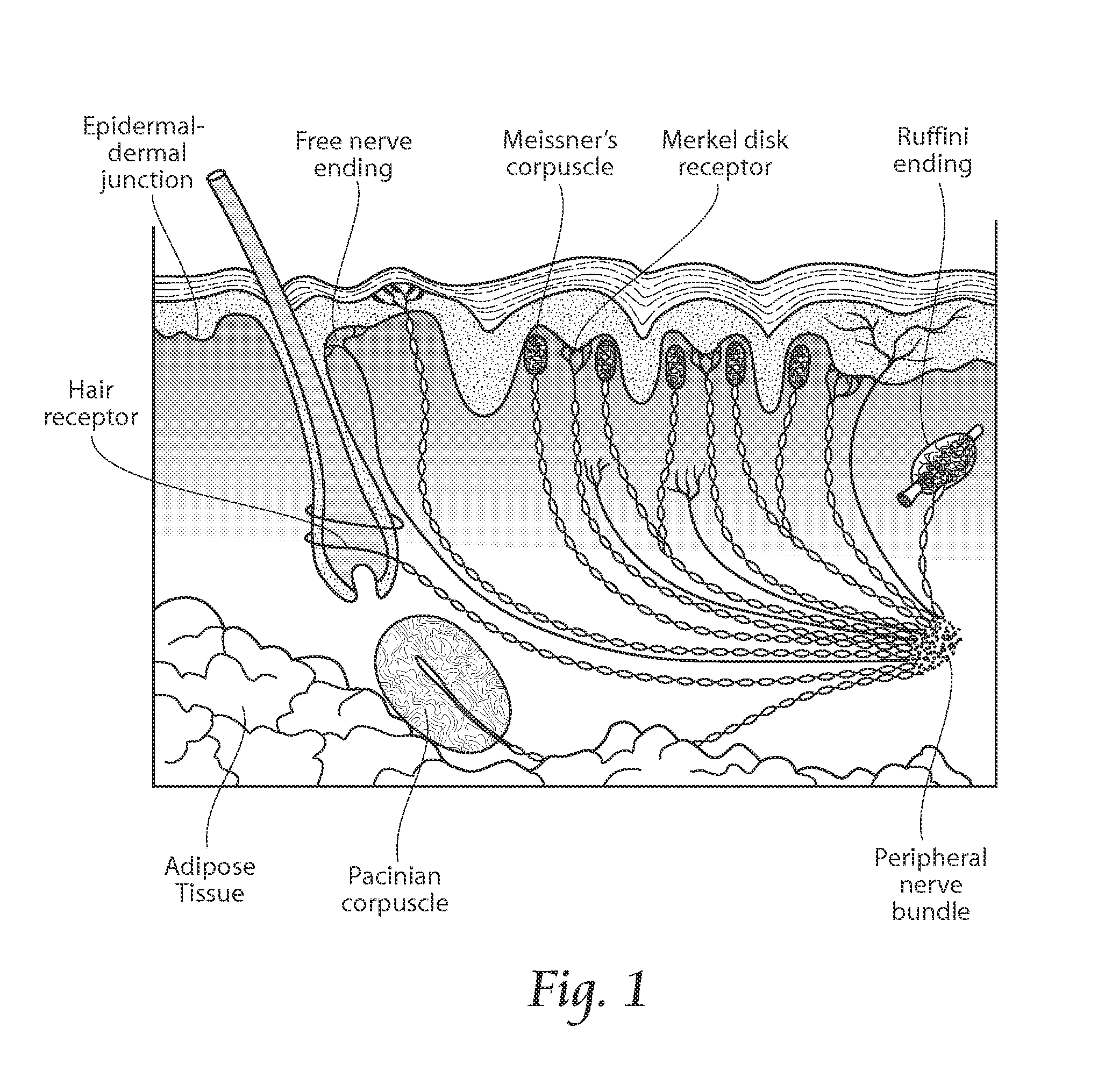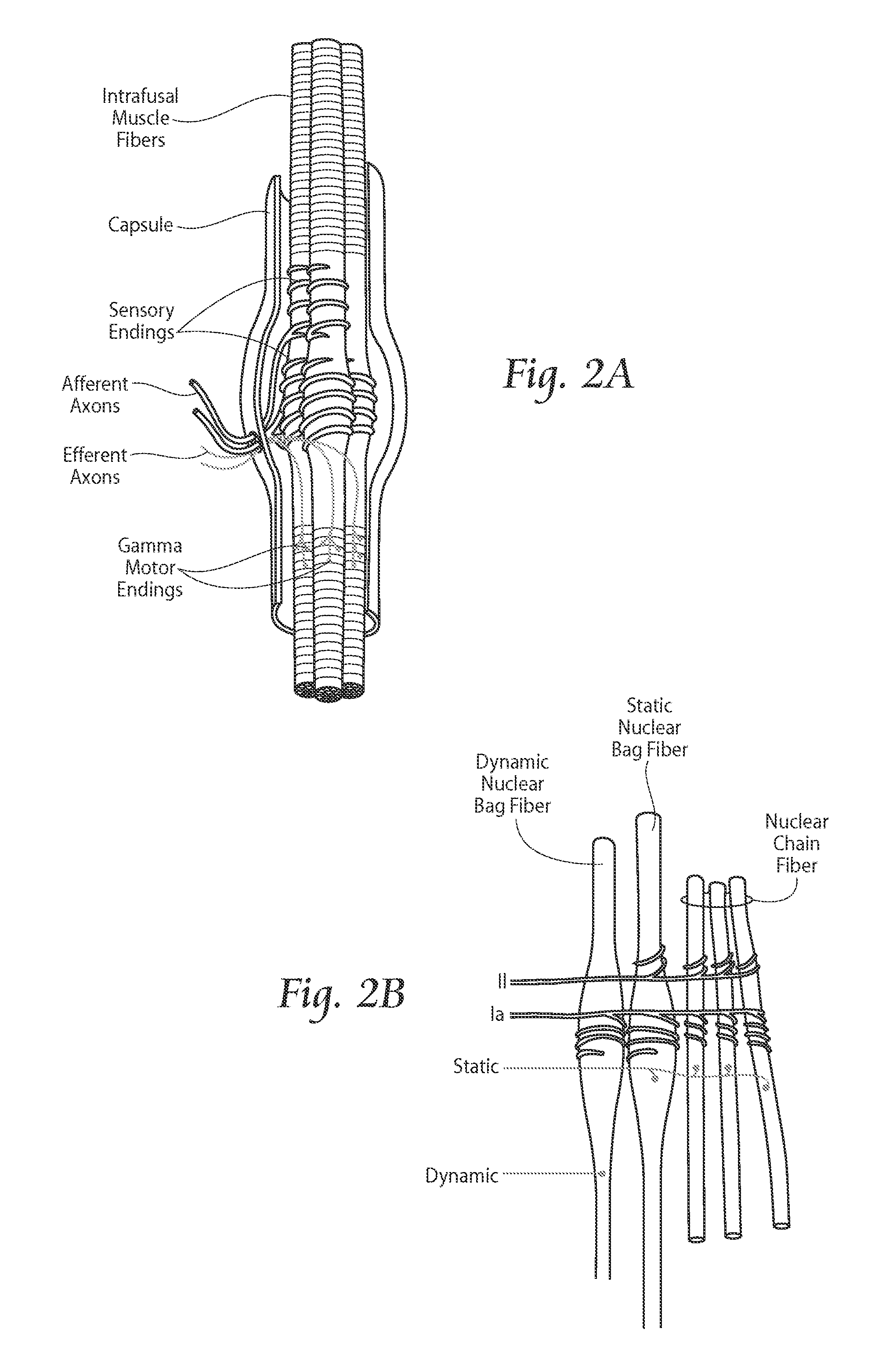However, in persons experiencing
chronic pain (e.g., when a person becomes overly sensitized to pain), non-noxious stimuli, and hence the activity of non-nociceptive fibers, can cause pain.
This means that in a
chronic pain state, sensations that would not be perceived as pain in a healthy person (e.g. light pressure or touch) may actually be perceived as painful.
However, prior
nerve stimulation modalities used to treat pain, especially with regards to
peripheral nerves, recognized a narrow treatment window between stimulation settings that may achieve desired analgesia through sensory stimulation of non-nociceptive afferents and stimulation settings that reach the threshold for discomfort or motor stimulation of efferent fibers, the latter thought to be undesirable for a number of reasons.
While prior systems and methods can provide remarkable benefits to individuals requiring therapeutic
pain relief, many issues and the need for improvements still remain.
Despite the recognition and use of electrical stimulation for the treatment of pain, widespread use of available systems is limited.
Such limited use is thought to stem from a variety of factors, such as invasiveness of required
surgical procedures (e.g.
lead placement in
epidural space of
spinal cord or surgical
dissection), risk of surgical complications associated with such procedures (e.g. infection, hemorrhage,
neurologic injury, and / or spinal fluid leaks), the technical skill and training required to place the
electrode(s), the duration of time required to place the
electrode(s) correctly, the supporting equipment (e.g.
imaging equipment such as
fluoroscopy) required for
electrode placement, risk of device complications (e.g. migration of stimulating lead or
catastrophic failure, or breakage, of such lead), and / or loss of
pain relief over time.
Advantageously, TENS has a low rate of serious complications, but disadvantageously, it also has a relatively low (i.e., approximately 25% or less) long-term rate of success, and some of its success is attributed to a
placebo effect.
Additionally, TENS has low long-term
patient compliance because it may cause additional discomfort by generating cutaneous pain signals due to the electrical stimulation being applied through the
skin, the electrodes may be difficult to apply, and the overall
system is bulky, cumbersome, and not suited for long-term use.
In addition, several clinical and technical issues associated with surface electrical stimulation have prevented it from becoming a widely accepted treatment method.
First, stimulation of cutaneous pain receptors often cannot be avoided resulting in stimulation-induced pain that limits
patient tolerance and compliance.
Second, electrical stimulation may be delivered at a relatively
high frequency to prevent stimulation-induced pain, which leads to
early onset of
muscle fatigue in turn preventing patients from properly using their muscle(s).
Third, it is difficult to stimulate deep nerves and / or muscles with surface electrodes without stimulating overlying, more superficial nerves and / or muscles resulting in unwanted stimulation.
The required daily maintenance and adjustment of a surface electrical stimulation
system is a major burden on both patient and caregiver.
Similar to TENS, when SCS evokes paresthesias that cover a region of pain, it confirms that the location of the electrode and the stimulus intensity should be sufficient to provide
pain relief and pain relief can be excellent initially, but maintaining sufficient paresthesia coverage is often a problem due to lead migration along the
spinal canal.
When it can produce paresthesias in the region of pain,
spinal cord stimulation is typically successful initially in reducing pain, but over time the paresthesia coverage and
pain reduction is often lost as the lead migrates away from its target.
Although this approach may be successful, it often requires time-intensive and complex
programming, adding to the overall cost of the therapy and the burden on the patient and caregiver(s).
Peripheral nerve stimulation has been attempted and may be effective in reducing pain, but it previously required specialized surgeons to place
cuff- or
paddle-style leads on or around the nerves in a time-consuming and invasive surgical procedure.
 Login to View More
Login to View More  Login to View More
Login to View More 


